鯛の浦遊覧船の歴史
History of Tainoura pleasure boat
鎌倉時代に、日蓮聖人ご生誕から、神秘の鯛が特別記念物の指定を受けるまで、いかに漁民達が鯛の事を日蓮聖人の化身として信じて守って来たかを絵を見ながらご覧ください。神秘の鯛と漁民達との深い繋がりがご覧いただけます。昔の船から現在の船への模型の写真をご覧いただけると鯛の浦の歴史がおわかりになると思います。
English version
小湊・妙の浦タイの葬式 >
昭和40年頃まで行われていた「鯛の葬式」です。
漁民達がいかに鯛を日蓮聖人の化身として神聖視し、大事に守って来たかご覧ください。
鎌倉時代に、日蓮聖人ご生誕から、「神秘の鯛」が特別記念物の指定を受けるまで、いかに漁民たちが鯛の事を日蓮聖人の化身として信じて守って来たかを絵を見ながらご覧ください。神秘の鯛と漁民たちとの深い繋がりがわかるはずです。
鯛の浦年表鎌倉時代・日蓮聖人誕生〜現代までに至る鯛の浦の出来事です
| 貞応元年 (1222年) | 日蓮聖人生誕奇跡として鯛の出現 |
|---|
| 文永元年 (1264年) | 波題目と投げ餌の始まり |
|---|
| 建治2年(1276年) | 寂日坊日家上人誕生寺建立 |
|---|
| 明応7年(1498年) | 明応の大地震と津波 |
|---|
| 天正8年(1580年) | 南房総の豪族里見氏の庇護 |
|---|
| 天正9年(1581年) | 太田康資鯛の浦の荒廃を救う |
|---|
| 寛文5年(1665年) | 水戸黄門光国の尽力 |
|---|
| 元禄16年(1703年) | 元禄の大地震と津波 |
|---|
| 文政4年(1821年) | 相馬大作の捕り物 |
|---|
| 天保・弘化年間(1840年) | 信者たちの鯛の浦詣で |
|---|
| 江戸時代後記(1850年前後) | 鯛の浦の鯛と漁民 |
|---|
| 明治36年(1903年) | 漁業法による禁漁区に指定さる |
|---|
| 大正11年(1922年) | 内務省より天然記念物に指定さる |
|---|
| 昭和7年(1932年) | 鯛の大謀網大量捕獲事件 |
|---|
| 昭和25年(1945年) | 戦時下の保護 |
|---|
| 昭和27年(1952年) | 動力遊覧船の就航 |
|---|
| 昭和39年(1964年) | 皇太子御一家遊覧 |
|---|
| 昭和42年(1967年) | 特別天然記念物の指定を受ける |
|---|
鯛の浦会館の2階には様々な鯛の浦に関する貴重な資料や金色の豪華な満願の鯛神輿、3階には内浦湾の出船入船が見れる展望室、前をさえぎることなく、全面ガラス張りの部屋からは広々とした海が目の前に広がっています。
English version
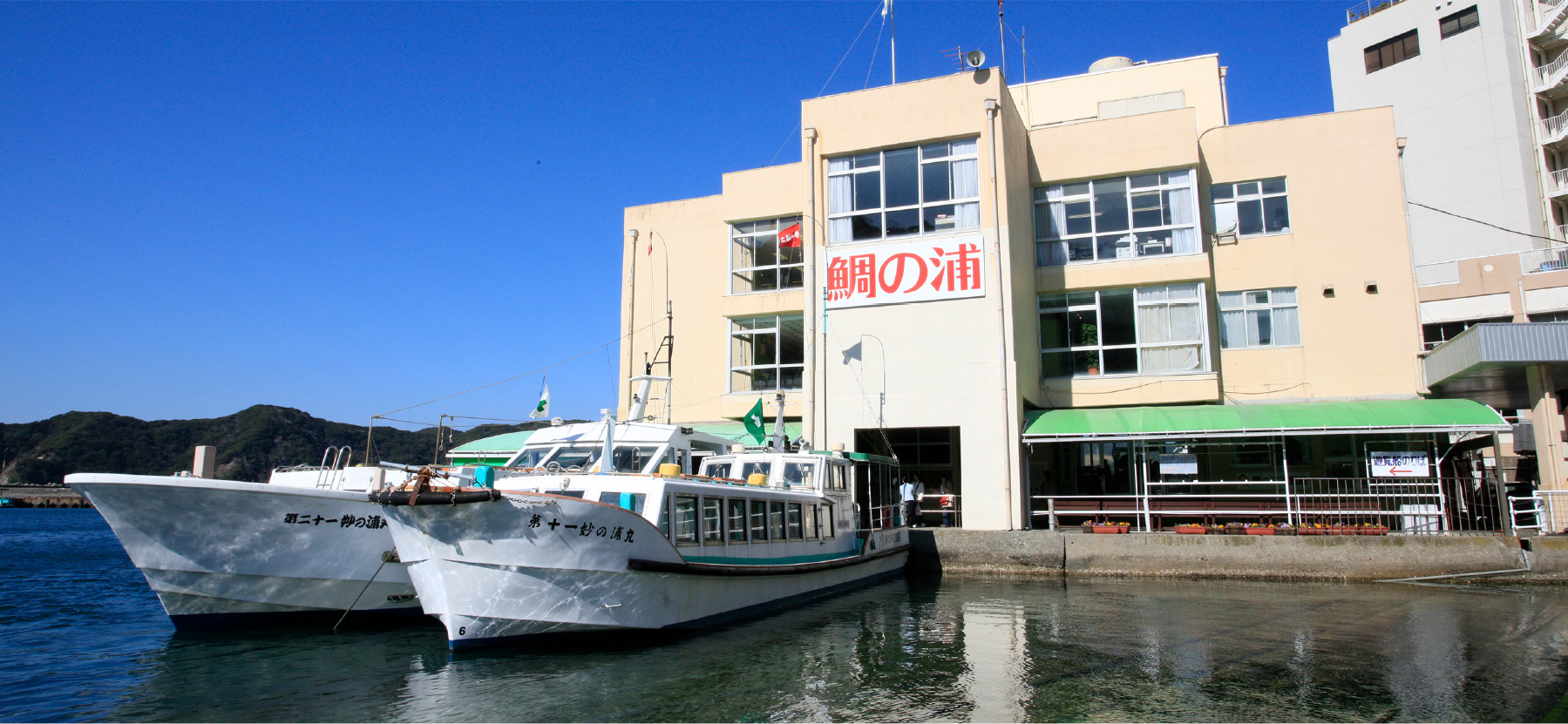
鯛の浦会館と現在使われている遊覧船
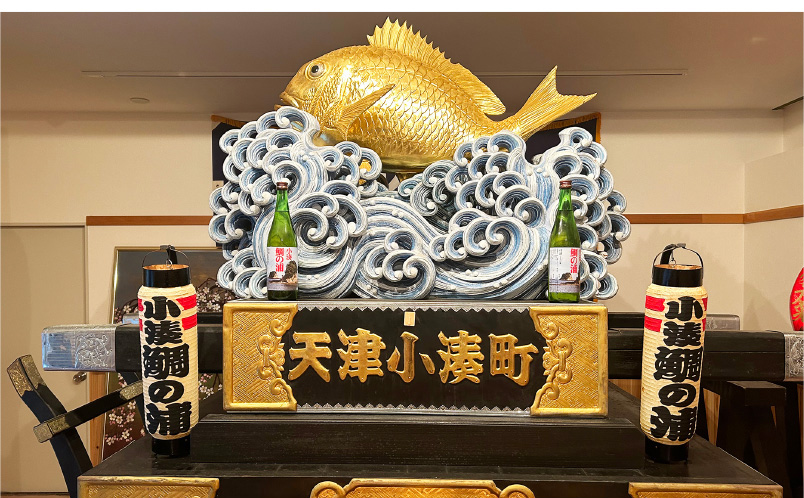
鯛神輿
Tai Portable Shrine
船頭さんがイメージアップ!
昔ながらの半纏が復活
The boatman’s image is upgraded! The traditional
half-coat is making a comeback. 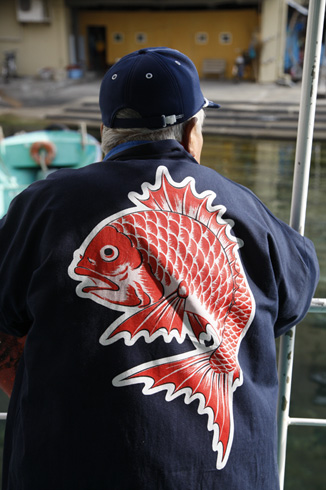
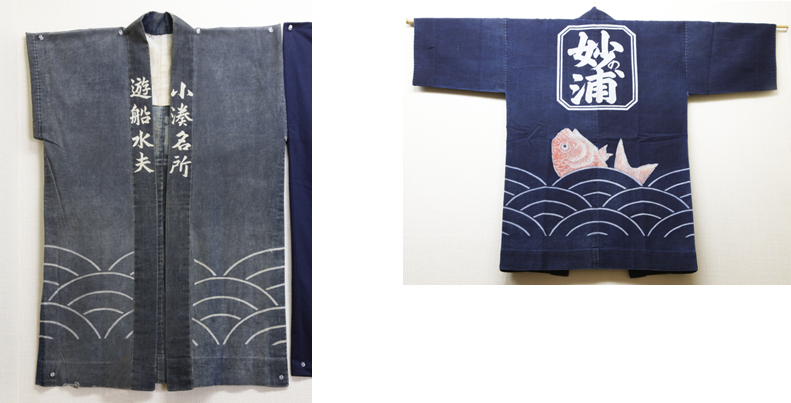
70年ぶりに半纏が登場!半纏はえりに「小湊妙の浦」と「特別天然記念物」と白抜きで表示、背中いっぱいに赤いタイ(横40×縦50)をあしらいました。
English version
鯛の浦 ONLINE SHOP
幸運を呼ぶとされる大開運の「鯛の浦の鯛」。鯛の浦名物「鯛せんべい」、
ほかにも船長さんやスタッフも着ている「鯛の浦オリジナルTシャツ」など
鯛の浦が自信を持っておすすめする商品の数々です。
English version 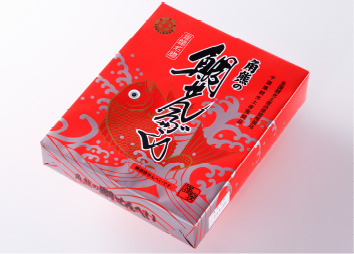
房総名物 角熊の鯛せんべい(大)
36枚(2枚×18袋)1,200円(税込)
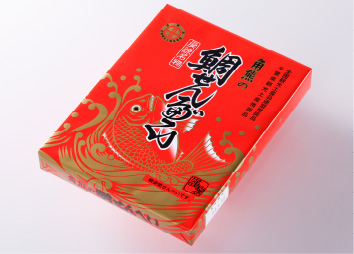
房総名物 角熊の鯛せんべい(中)
20枚(2枚×10袋)800円(税込)
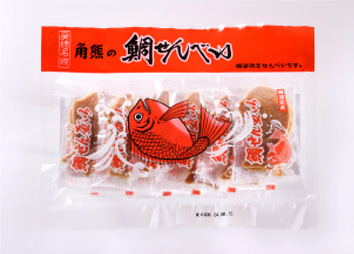
房総名物 角熊の鯛せんべい(小・2袋セット)
12枚入り(2枚×6袋)×2袋セット
1,000円(税込)
![[本皮お財布バック]ポシェット 黒色](https://tainoura.jp/wp/wp-content/themes/tainoura2024/images/shopping03.jpg)
本皮お財布バック ポシェット 黒色
30,000円(税込)
![[本皮お財布バック]ポシェット 茶色](https://tainoura.jp/wp/wp-content/themes/tainoura2024/images/shopping04.jpg)
本皮お財布バック ポシェット 茶色
30,000円(税込)
![[本皮お財布バック]ポシェット ピンク色](https://tainoura.jp/wp/wp-content/themes/tainoura2024/images/shopping05.jpg)
本皮お財布バック ポシェット ピンク色
30,000円(税込)
![[本皮お財布バック]ポシェット 黄色](https://tainoura.jp/wp/wp-content/themes/tainoura2024/images/shopping07.jpg)
本皮お財布バック ポシェット 黄色
30,000円(税込)
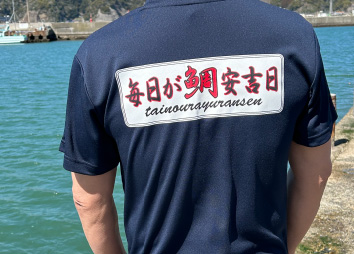
鯛の浦オリジナル 毎日が鯛安吉日Tシャツ 紺色
S・M・L・LL(男女兼用) 3,300円(税込)
MORE The "Tai of Tainoura," believed to bring good luck, is a symbol of great fortune. In addition to the famous Tainoura specialty, "Tai Senbei" (fish-shaped crackers), there are many other recommended products proudly offered by Tainoura, including the "Tainoura Original T-shirt" worn by the captains and staff, as well as the "Genuine Leather W
×小湊、妙の浦タイの葬式
鯛の葬式は、昭和十年頃妙の浦のタイが冷たい潮にあって死んで、小弁天島の砂浜に打ち上げられたことから始まります。祓部落の人たちが、誕生寺のお坊さんにきてもらって、砂浜でタイのお葬式をしました。当時の人々はまだまだ謎めいたことを大事にする風習が強く、信仰心も厚く、神事、仏事には特に気を使っていて、神がかりの人が大勢いました。
それから約三十年過ぎた昭和四十二年三月のとき、
その日の朝、磯を見回りに行った主婦が、
「おいねこったさぁ〜」
「あんだっぺねぇ〜」
「大きなてえだね」
「あいよ、そだねぇ〜」
「あんで死んだんかねぇ〜」
「妙の浦へしらせてくるよ」
「あいよ たのんだよ」
「おいねこったさ、たのむよぉ〜」
「あいよ、行ってくるよ」
これはタイの死んでいるのを発見したときの主婦たちの会話です。
「困ったことだね」
「どうしたんだろね」
「大きなタイだね」
「そうだね」
「どうして死んだんだろうね」
「妙の浦遊覧船組合へ知らせに行くよ」
「困ったね」
「そうだね、行ってくるよ」
この頃の会話にはなおせばこうした会話になります。当時はまだ房州弁で都会の人には理解にまよう会話が交わされていました。
浜に残った主婦たちは、背負籠をおろしタイを見守っていました。
「でっけね」
「五十センチぐらいあるかね」
「まだぴかぴかひかってんねぇ〜」
「あんで死んだんかね」
「かわいそうにね」
妙の浦のタイは、日蓮聖人誕生のとき不思議な事があり、これを聖人生誕三奇瑞と伝えられています。
伝えによれば、一つめは、聖人が産声をあげたとき、突然、庭先から清水が沸き出し、この清水で産湯をつかったと言われています。これが世に言う誕生水です。
二つめは、ご生家近くの砂浜にときならぬ蓮華の花が一斉に咲き誇り、以来この砂浜は「蓮華ヶ淵」と呼ばれ、蓮華の花のように美しく輝く砂は「五色の砂」と呼ばれています。
三つめは、聖人誕生を祝福するかのように、海面近くにマダイが群れをなして現れ、その後、この一帯に生息するタイは、日蓮聖人の化身、分身として尊信され禁漁が守り続けられ、大正十二年(一九二二)に国の天然記念物に指定され、手厚く保護されています。
小湊では、三奇瑞以降、かたくなにタイの禁漁を守り、今もって小湊の漁業者にタイ釣りの漁法はありません。それだけにタイへの思いは強く、タイ一匹といえおろそかにはしないのです。
タイの寿命は学術的にも長寿の魚類で、おおそ五十センチ位ですと二十年は経っているようです。小湊では、タイは禁漁なので漁家の主婦でも、こんな大きいタイは見たことがなかったので、みんな一様に驚いていました。
主婦からの知らせを聞いた遊覧船組合の役員たちが飛んできて、いろいろと話し合っていました。役員たちも長いこと遊覧船に携わっているが、タイの大きさに一様にびっくりしていました。
「あんにしてもよう」
「寺から坊さんにきてもらってよぉ、お経をまずあげてもらったらどうでえ」
「おめえ、寺にいってこおよ」
「あいよ、坊さんにたのんでくるよ」
「たのむよ」
と、こんな会話が聞こえてくるような雰囲気で、だれもがタイは日蓮聖人の化身と思っているだけに、やたらな事をして罰があたらないように、細心の気配りをしていました。
小湊では昔から、タイを内緒で釣って食べて罰があたったという話しが伝わっていました。
ある人がタイを隠れて釣り、家に戻って一人で刺身にしたり、塩焼きにしたりして、
「うめえ、うめえ」と喜んでいるうちに、不思議なことにいつの間にか、いかにもタイが泳いでいるような格好になってしまい、狂ってしまったとか。
夜中に磯に入りタイを釣って、これまた「うまい、うまい」と食べ過ぎて、それからは夜に目がきかず、生涯、夜の外出が出来なかった人がいたとか、そのほかあまり町中の評判になって、住みづらくなって夜逃げしてしまったとか。
タイのことになると小湊の人は、「触らぬ神に祟りなし」と、絶対にでじゃばることなく、そんなときは年寄りに相談してから対応をしていました。
さあ、役員同士の話し合いが決まり、遊覧船組合が施主となって、人間の葬式と同じように葬式をすることに決まりました。
お葬式となると早速、誕生寺から、導師のお坊さんが見えて臨終のお経が唱えられました。
しばらくすると、組合から葬式のお触れが出たので、祓・小船谷・番場・上の川・田町の各部落の鯛の浦に関係する住民と、誕生寺門前の茶店・旅館・土産物店などの人たちが、ぞくぞくと集まってきました。こんな時に、葬儀に遅れては失礼になると、また罰があたっては大変と、人々は先を争うように駆けつけてきました。
導師はうやうやしく唱題を唱え、
勧 請(かんじょう)
開経偈(かいぎうげ)
運 想(うんそう)
唱 題(しょうだい)
宝塔偈(ほうとうげ)
回 向(えこう)
と、さながら人間のお葬式と全く同じように儀式がすすめられました。
南無妙法蓮華供のお題目は、
ドンツクドンドン、ドンツクドンドン、ドンツクドンドンと太鼓に合わせて力強く唱え、神がかりのようにひたすら南無妙法蓮華経と唱え、しばらくの間、妙の浦は唱題の声と太鼓の音で、波の音も消えてしまいました。
タイを保護してきた伝統は、こうした信心から発生するもので、法律や規制ではすまされるものでないことが良くわかると思います。
葬儀が終わると、タイが永年住みなれた妙の浦から、誕生寺の埋葬地へと葬列が始まりました。
先導は太鼓の組、続いて施主の役員、お坊さん、タイを箱に入れて列に入った遊覧船の船頭、そしてそのあとには、駆けつけてきた門前の人たちなど、まるで人の葬式と同じように進んで行きました。
妙の浦海岸は現在のようにコンクリートの遊歩道がないので、人々は足元に気をつけながら、ドンツクドンドン、ドンツクドンドン、ドンツクドンドンと太鼓をたたきながら葬列を組み、誕生寺めがけて進んでいました。
行列の後方には、あのタイを発見した主婦たちが、葬式に使った用具の後片付けをしていました。
主婦たちは、葬列を送ったあとあらためて、
「いったねぇ〜」
「あいよぉ〜」
「ああ、胸がすっとしたさぁ〜」
「あいよねぇ〜」
と大事な役目を果たしたことに、一様に胸をなでおろしお互いに気苦労を労りあっていました。タイの葬式なんて、めったに巡りあえるものではないので、朝からの興奮がまだ覚めないようでした。
葬列は誕生寺の総門から入り、土産店の前を通っていきました。
奇妙な行列を見た観光客は、売店の前で立ち止まり、
「何の行列ですか」
「ええ、タイの葬式ですか」
「ほんと?」
と一様にびっくりしていました。
境内に入ると先日の二月十六日の誕生会が終わったあとで、赤い雪洞が立っていました。まるで日蓮聖人像をお祀りする祖師堂の大屋根が葬列を迎えているように感じました。
葬列は龍王堂をすぎ、弁天池の辺りに立つ八大龍王碑前で止まりました。
八大龍王は、仏陀の説法の座に列した護法の善神とされる、八人の龍王を総称するといわれています。
特に漁業者は航海安全、豊漁を祈ることが多く、信仰が厚いのです。ここでは、八大龍王碑を別名「タイ塚」と呼び、タイの遺体は塚の後方に埋葬しました。
タイ塚の前にうやうやしく祀られたタイに、参列者一同が埋葬の儀式を行ない、導師が唱えました。
八大龍王の御前において、妙の浦のタイの菩提を厳唱し、南無妙法蓮華経を三唱して、ながい葬儀が終わりました。
人々が去って塚に埋葬が済むとタイの面倒を見た船頭たちは、お坊さんに塩で身体を浄めてもらい遊覧船に戻っていきました。一様に大役を果たしてホッとしていました。世界的にもタイの葬式は未知の世界。誕生寺に参詣に来た人たちは驚いたことでしょう。祖師堂では、タイの葬式を見て感動した家族が静かに祈りをささげていました。
さて一夜あけた翌日、昨夜よく冷え込んだとおもっていたら、雪が舞い降りたらしくめったに見られない雪景色に出会いました。
外房州は昔から二月三月に雪が舞い、先人たちは「逆さ寒」と呼んでいます。
十年に一度あるかないかの雪景色、大弁天島も雪化粧し、入道が鼻手前の山肌には雪が積もってまるで綿のように見えました。
昨日、ここ妙の浦は一日中、天地がひっくり返るような大騒動でしたが、それもどこに消えてしまったのか、静かに潮騒の音のみが耳に響いていました。上げ潮になったのか、磯の上の雪が次第に溶けていきました。
二度と逢えないかもしれないタイの葬式に出会う事ができて本当に良かったと思いました。
合 掌
During the Kamakura period, from the birth of Nichiren Shonin to the designation of the "Mysterious Tai" as a special monument, observe how fishermen have believed and protected tai fish as the embodiment of Nichiren Shonin through paintings. You will understand the profound connection between the mystical tai and the fishermen.
× When Nichiren Shonin returned to this place to pay respects to his ancestors, he faced the sea and prayed, inscribing the sacred title "Namu Myoho Renge Kyo." Suddenly, the characters appeared on the surface of the waves, and at the same time, a multitude of sea bream gathered and consumed the characters completely. The villagers were astonished by this miracle and thereafter regarded the sea bream as the living manifestation of the saint. They worshipped them as divine beings, holding festivals and protecting them for hundreds of years by providing offerings, considering the area a sacred site where the killing of life was prohibited.
× The brave general Yasushi Ota Shinrokuro, who was defeated in the Battle of Kokufudai in the 7th year of the Eiroku era, hid it in Tanjoji Temple, but he was concerned about the devastation of Tai no Ura due to fishing ground disputes and decided to settle the matter through mediation. On October 12th of the following year, the Hojo clan's forces approached, and the fishermen resisted them in order to get revenge for their suspicions. Yasushi committed suicide by committing suicide out of concern for what would happen to the villagers. In later years, the villagers believed that Yasushi had sought the help of a white fox to mediate, so they buried his remains and built the Ota Inari Treasure within the Tanjoji Temple.
× The significant earthquakes and tsunamis during the renowned events of the Meio and Genroku eras were truly devastating. They caused substantial changes in the topography along the Pacific coast, leading to the submersion of the birthplace of Nichiren Shonin, the reconstructed temple of Tanjo-ji, and numerous houses. While these events also brought about significant changes in the seabed, the simple faith and traditions associated with the continued appearance of the tai (red sea bream) have been steadfastly inherited, preserved, and passed down.
× Lord Mitsukuni Tokugawa, also known as Mito Komon, contributed his personal wealth to the reconstruction of the abandoned Birthplace Temple (Tanjō-ji), which had been suppressed by Oda Nobunaga's anti-Buddhist policies. This effort was undertaken in response to a request from the venerable priest Nichitaka of the Daichū-in temple. As a result of Mitsukuni's contributions, the Tokugawa Shogunate issued an official permit (shuinjō), reinstating the temple's former estate of 70 koku (a unit of land measurement) and elevating it to the status of a 100,000 koku estate. Consequently, the maritime territory reverted to being temple land, and strict fishing restrictions were imposed to protect the sacred grounds from fishing activities.
× Shoma Hidenojou Shoushin, a loyal retainer of the Ou Southern Clan, changed his name to Soma Daisaku and left the clan. He went fishing off the coast of Myouno-ura, but was surrounded by pursuers. Unwilling to stain the sanctuary with blood, he leaped into the sea. Despite efforts to capture him with nets, Daisaku miraculously escaped unharmed. He was skilled in Southern painting, and several of his works, including depictions of celestial maidens and fierce tigers, are now housed in the current Myouno-ura Birthplace Temple.
× During the period from Tenpo 15 (1844) to Kouka 1 (1844), the present-day landscape of Birth Temple was almost completed. Many believers of the Nichiren sect regarded it as a holy place, and thanks to the services of the local fishermen, the pilgrimage to Taino-ura became popular. At that time, the pilgrimage to Tainoura was conducted out of faith, aiming to worship the presence of the living figure of Nichiren Shonin represented by the sea bream.
× The fishermen revered the sea bream, which had deep ties, as a deity, believing in the presence of a large shark that guarded the sea bream. On the other hand, on the islands of Oobenten and Kobenten, Benzaiten (the goddess of water and wealth) was enshrined, and the fishermen prayed for safe passage and a bountiful catch each time they went in and out of the sea at Tainoura. Even today, at the beginning of the year, the entire community holds a sea bream festival, with boats lining up, praying for maritime safety and a plentiful catch. The tradition of praying for maritime safety and a bountiful catch at the start of the fishing season continues unchanged.
× 1903, it was designated as a prohibited fishing area under Article 26 of the Fisheries Act. Subsequently, Nishitoshi Gosho, a figure in the Soma Incident, with the assistance of Shimpachi Gotō and others, embarked on a major tourism development plan along the coastline of Tainoura, attempting to acquire it. However, the villagers adamantly opposed this move out of fear of destroying the protection of the sea bream and the beautiful natural environment. Thus, the designation as a natural monument was achieved, and the longstanding efforts inherited from their ancestors to protect the area bore fruit.
× During the Tokyo air raids, Tainoura, located directly beneath the flight path, was subjected to the deafening roar of explosions night after night. Only the elderly and women remained in the village, facing severe food shortages. Despite the fear of air raids, the elderly continued to feed the precious small fish to the sea bream without consuming any themselves. Even during the chaotic post-war period, not a single person consumed the sea bream, and the affection and protection towards the sea bream remained unwavering.
× On the second floor of the Tainoura Community Center, there are various valuable materials related to Tainoura, as well as a luxurious golden "Mangan no Tai Mikoshi" (portable shrine) used in festivals. On the third floor, there is an observation room where you can see the departure and arrival of boats in the Uchiumi Bay. With its floor-to-ceiling glass windows, the room offers an unobstructed view of the spacious sea right in front of you.
× The Tainoura Community Center" and the current tired sightseeing boats.
× A type of boat called "Itchoro boat" used from the first year of the Bun'ei era (1264) to the end of the Meiji era.
× A type of boat called ""Itchoro boat" used from the first year of the Taisho era (1912) to the 28th year of the Meiji era.
× A type of boat called "hikibune" used from the 29th year of the Showa era to the 32nd year of the Showa era.
× A steel ship used from the 33rd year of the Showa era to the 51st year of the Showa era.
× After 70 years, the half-coat makes its appearance again! The half-coat features 'Kominato Myo-no-Ura' and 'Special Natural Monument' displayed in white on the collar, and a large red sea bream (40cm wide x 50cm high) adorned on the back. Boatmen are also receiving favorable reviews when wearing the half-coat, which makes them look more dignified!"
×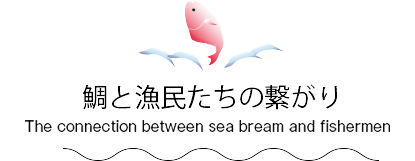
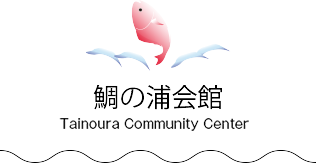
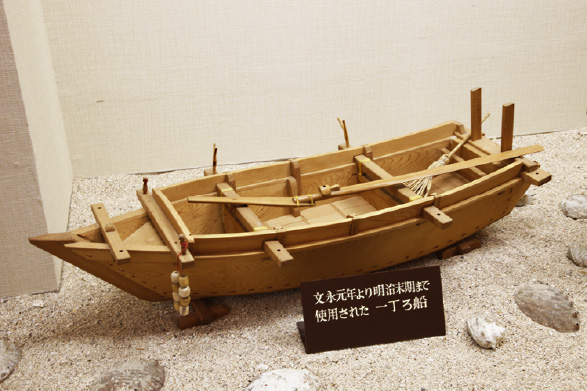
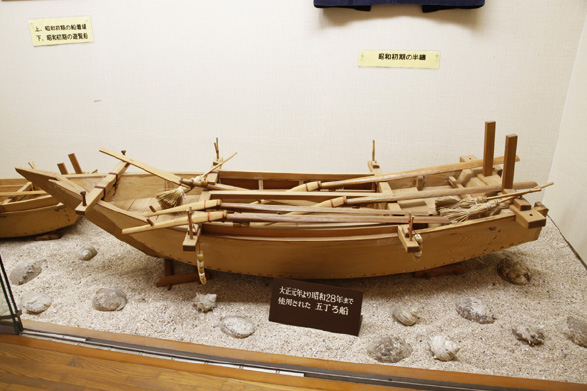
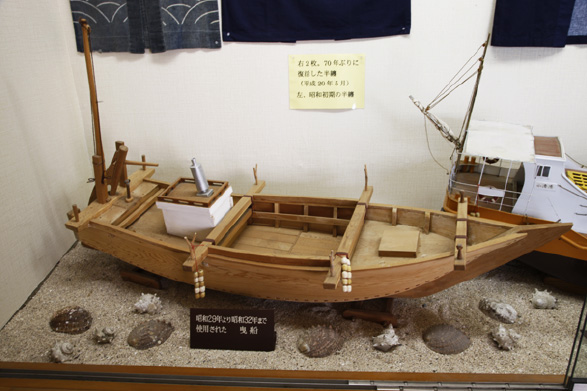
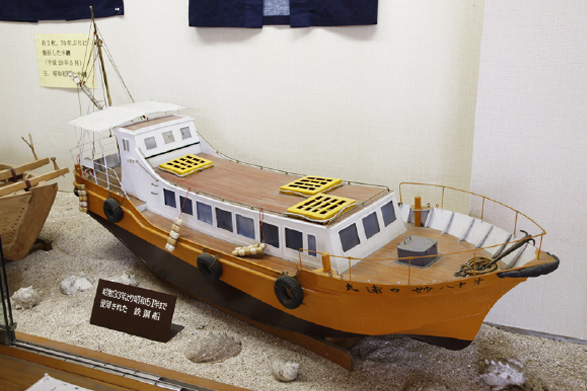


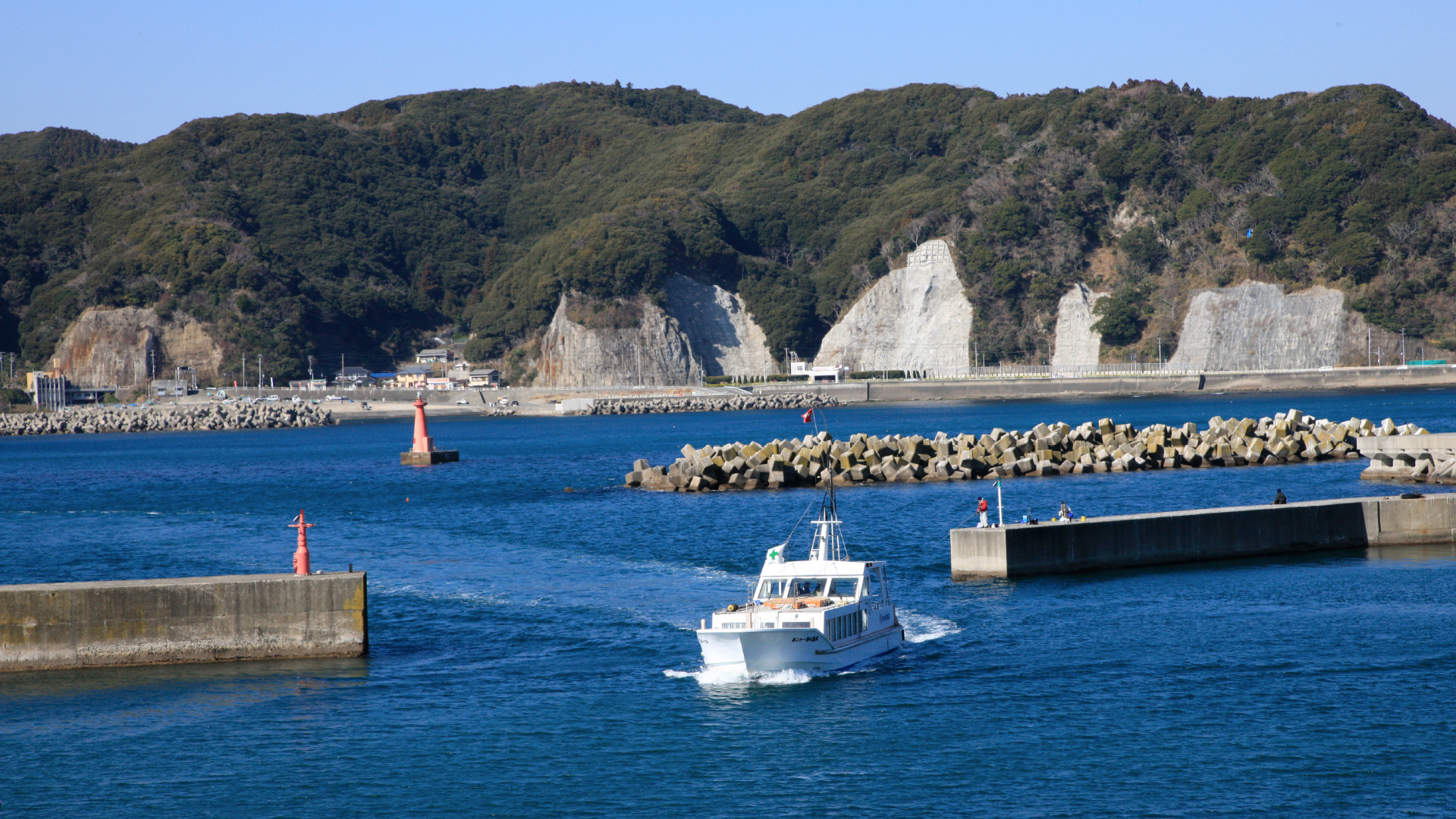
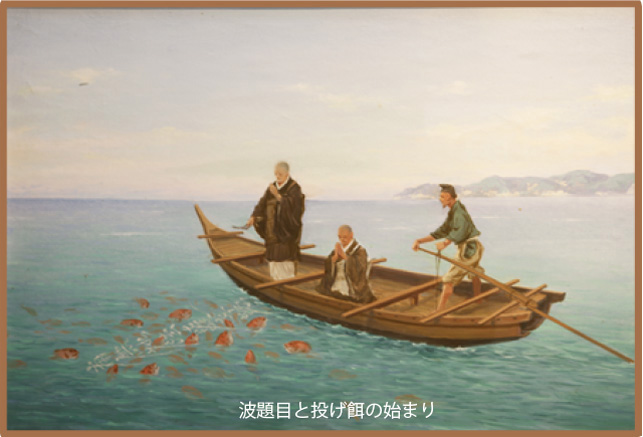
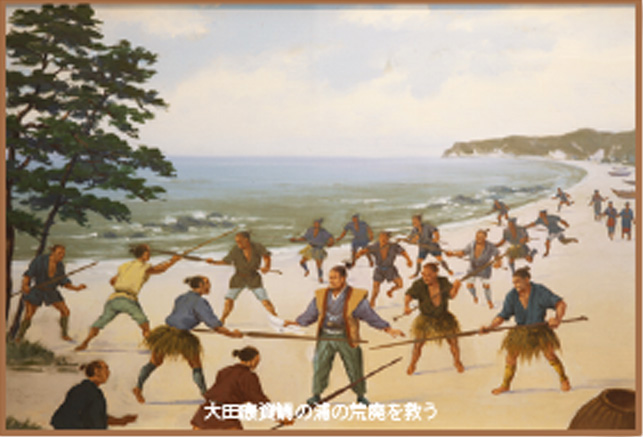
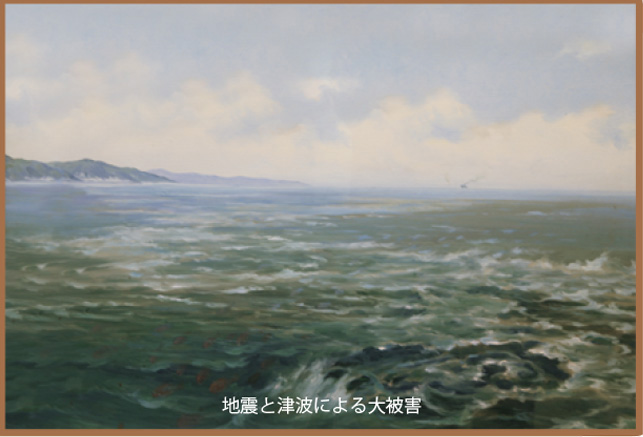
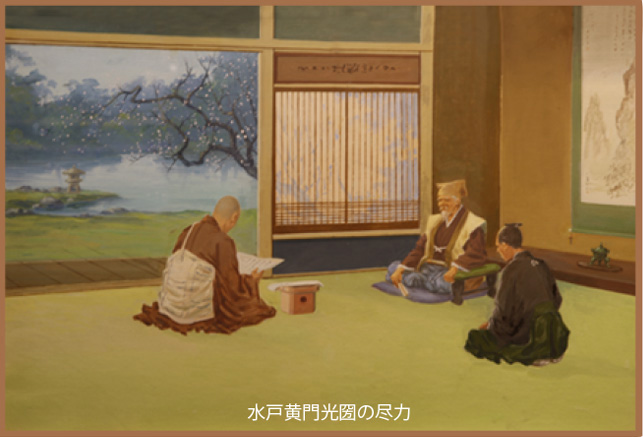
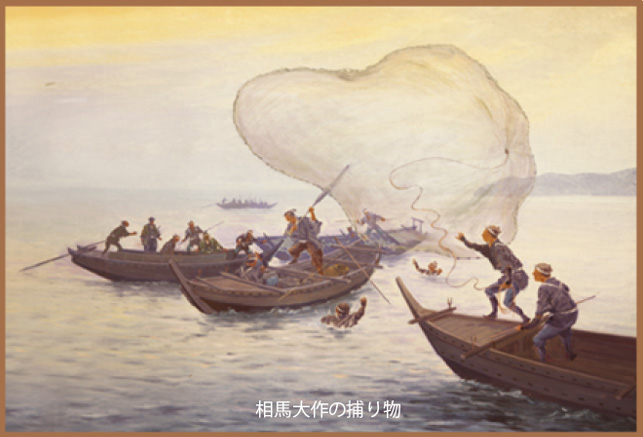

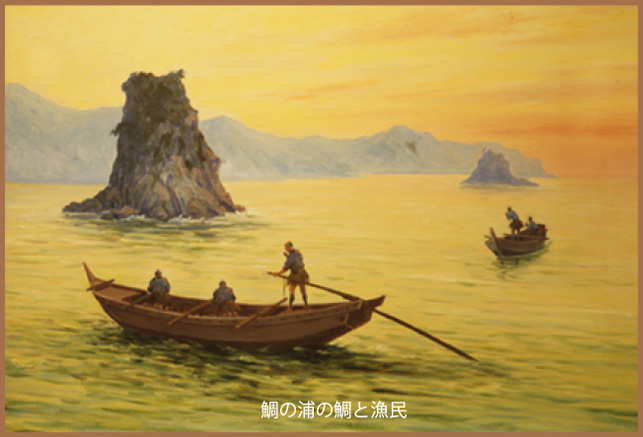
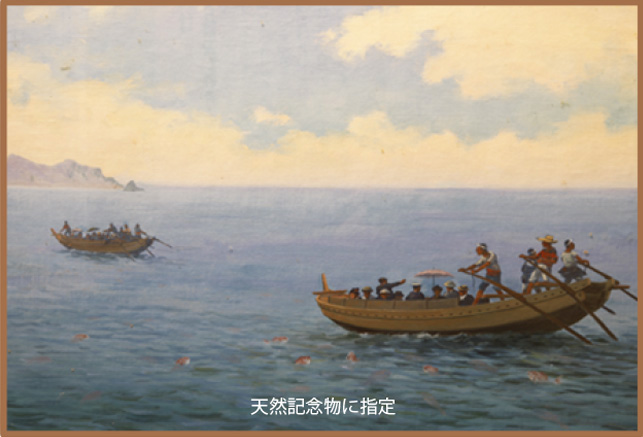







![[本皮お財布バック]ポシェット 黒色](https://tainoura.jp/wp/wp-content/themes/tainoura2024/images/shopping03.jpg)
![[本皮お財布バック]ポシェット 茶色](https://tainoura.jp/wp/wp-content/themes/tainoura2024/images/shopping04.jpg)
![[本皮お財布バック]ポシェット ピンク色](https://tainoura.jp/wp/wp-content/themes/tainoura2024/images/shopping05.jpg)
![[本皮お財布バック]ポシェット 黄色](https://tainoura.jp/wp/wp-content/themes/tainoura2024/images/shopping07.jpg)
